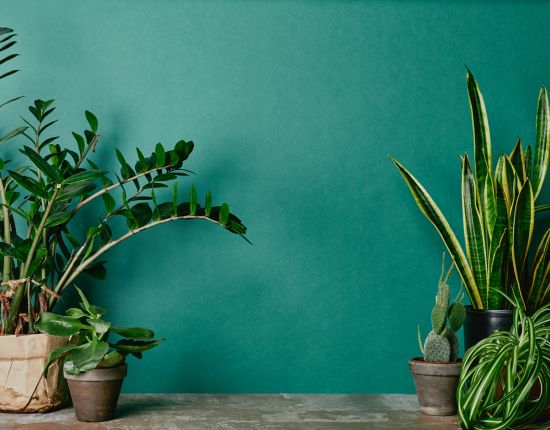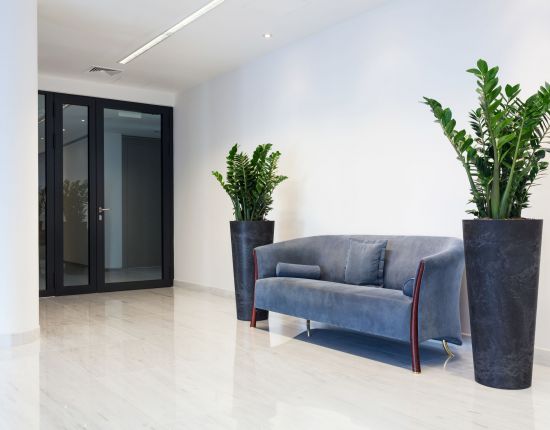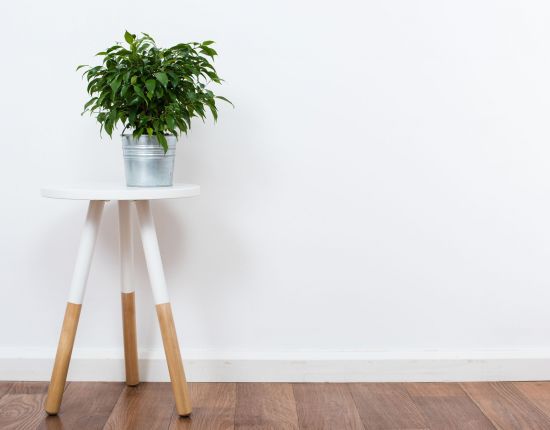Growing Indoor Plants with Success
Bringing indoor plants into your home or workplace brings with it a huge number of benefits to health and wellbeing. And, it will make the place look fantastic too! However, maybe you - like many others - feel that the arrival of a new houseplant is akin to signing it's death warrant?! To keep your surroundings looking as fresh as a daisy, you need to make sure you’re growing indoor plants with success!
Why indoor plants are great..!
Let’s start with why people grow indoor plants in the first place: whether in the home, or in the workplace, they are ultimately a perpetually popular way to decorate our surroundings; adding instant personaility to our spaces. When growing successfully, indoor plants look fantastic. There really is no better, yet simple, interior decor. The range of indoor plants available means that you can work with colours, levels of height and depth and shapes to create a stunning home or workplace aesthetic.
But, what else..?
There are the obvious health benefits: plants purify the air around them. They release oxygen, which is great for an indoor environment, particularly those that do not necessarily benefit from a constant flow of fresh air. Of course, for continued health benefits, the indoor plants must continue to grow successfully.
And..?
It's now well established that allowing nature inside improves our mindfulness: both at work and in the home, indoor plants can help to establish a sense of calm focus and productivity. This comes down in part to their natural colours, but in the main it is simply the atmosphere of being surrounded by life that is great for us humans!
How to choose the right plant!
While some people are daunted at the very thought of caring for an indoor plant, it is often simply a case of correctly matching the plant to the space; you will find that an indoor plant is easier to care for if it's the right plant for the location you have in mind for it.
Light Levels
The most crucial consideration for your indoor plant is how much light it will receive.
Consider both the Summer and Winter months: how far from windows will the plant be situated? And, whether the sunlight is direct, or not.
You can then successfully select your indoor plant, based on how much light it needs to thrive.
Maintenance Commitment
Before you choose an indoor plant, be realistic about how much care you can provide.
If the plant will be in an office where plant care could become a bone of contention, it's best to choose a low maintenance variety.
Let this be your main steer over aesthetics: the most simple plants thriving look more attractive than elaborate plants in neglect.
Size and Growth
Check how large an indoor plant is likely to grow.
Remember that you may need to repot the plant as it gets larger, so ensure that the location you have chosen will accommodate this growth successfully.
Pets and Kids
If your indoor plant is for the home (or a very tolerant office!) check in case the varieties you have chosen may have properties potentially toxic to animals or children.
On the opposite side of the coin, perhaps avoid indoor plants with drooping leaves that may be tempting for chewing jaws or adventurous fingers!
Once you have your ideal indoor plant, remember these key care tips to keep it growing... successfully.
Indoor Gardening Tips:
Pruning
You may not think of indoor plants as requiring pruning, but often they do.
Remember that these are organic and will eventually need a haircut as much as you do!
Late Winter is a good time to prune back your indoor plants, allowing them to grow successfully in the Spring.
Indoor plants that are woody are likely to require more regular cutting back to remove dead leaves and branches.
Watering
Make sure that your indoor plants are never sitting in water.
Place stones or broken ceramics at the bottom of a pot, or underneath the inner pot to prevent this.
Take note of the watering requirements of the varieties that you choose.
Most indoor plants thrive when they are allowed to get a bit dry between waterings.
Soil
Aim to repot your indoor plants in fresh soil every one to two years depending on the variety and the speed that they are growing.
Take the opportunity to scale up the pot size as a plant grows, if required.
If your plant is looking tired, or you can see a lot of roots emerging from the pot drainage holes, it’s time to refresh the soil.
Seasonailty
In the Winter, be conscious of any cold draughts that may be affecting your plants.
Decrease your watering, too - this is a common cause of indoor plant death at the turn of the season.
By grouping plants together you can increase the humidity of their environment, which allows them all to grow more successfully.
Cleaning
You may worry that you look a bit bonkers by dusting your plants, but remember that they rely on their leaves to survive.
If those leaves are clogged with dust, they will naturally struggle.
Clean leaves with a warm damp cloth, or give the whole plant a gentle shower.
This has the added benefit of washing away any tiny pests which may be attempting to take hold.
Light
As long as you have matched your plant variety with the room in which it is situated, natural variations in light shouldn’t matter too much.
And nor do you need to do much about it.
However, it is good practice to move your plant around a bit in the space.





